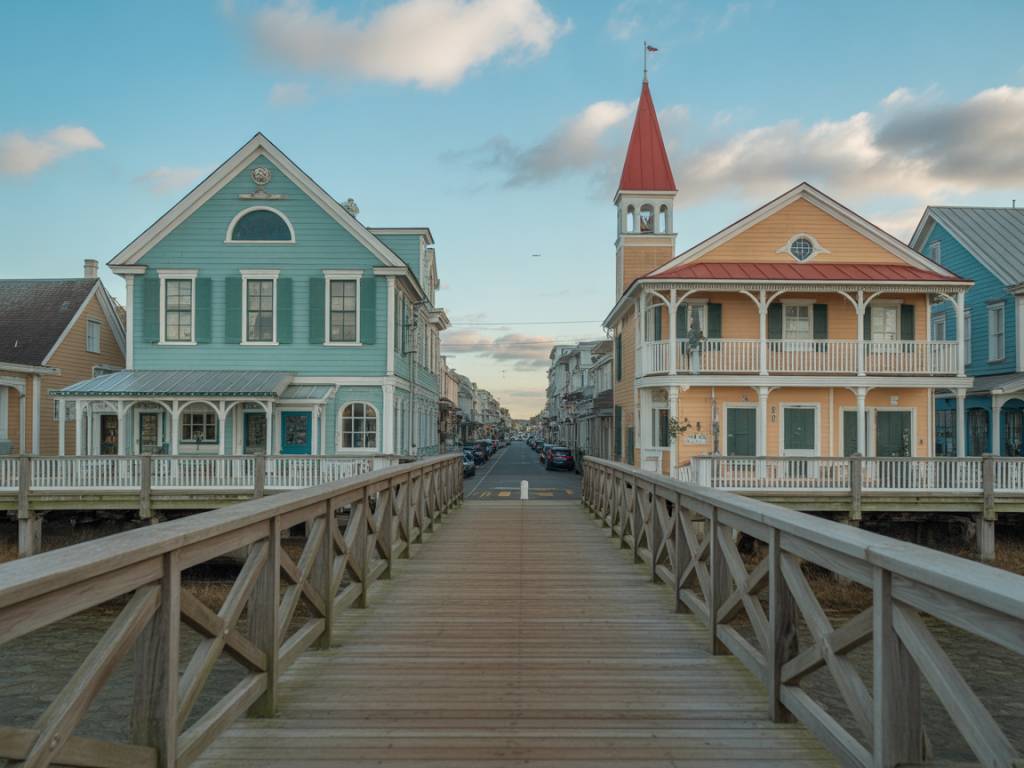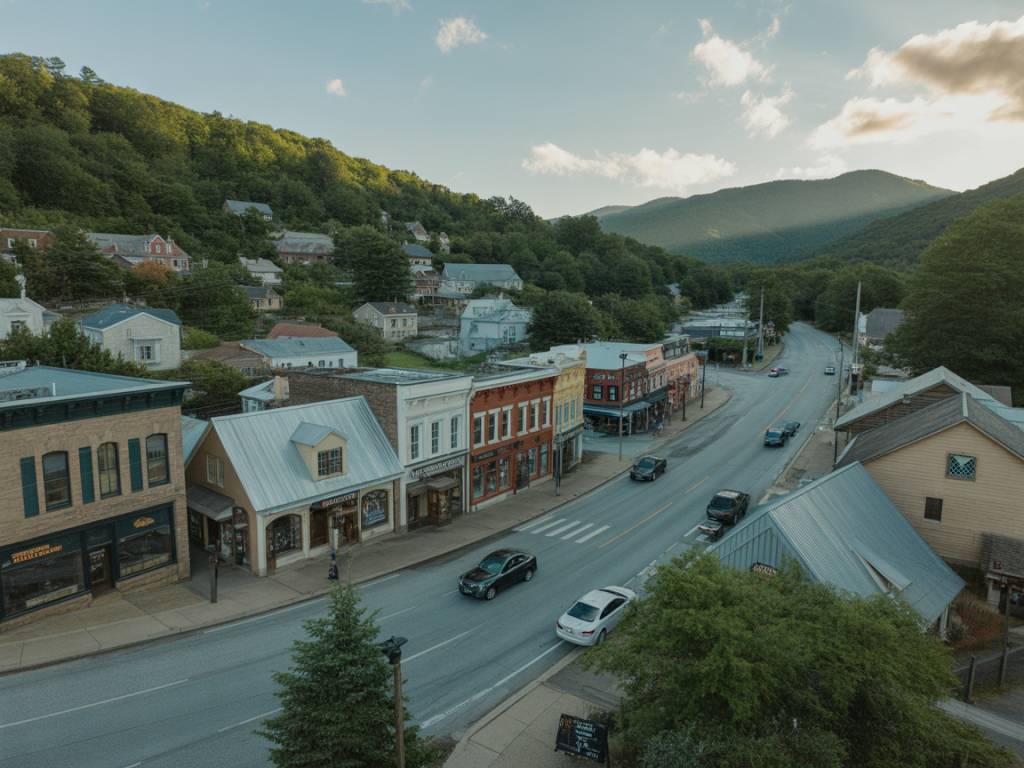Coastal Georgia: More Than Just a Shoreline
Georgia’s coastline may only stretch about 100 miles, but every inch of it tells a story. Often overshadowed by bustling cities and rugged mountains, the coastal communities along the Black Sea offer a refreshing blend of tranquility, history, and authentic charm. For those seeking an escape that combines seaside relaxation with cultural depth, these destinations deserve more than just a passing glance.
This guide sheds light on Georgia’s most captivating coastal communities—each with its own character, rhythm, and local flair.
Batumi – The Beating Heart of the Coast
Let’s start with the obvious, but no less essential. Batumi, the capital of the Autonomous Republic of Adjara, has transformed remarkably over the past decade. Tall glass skyscrapers and modern boulevards might suggest a rapid Westernization, but look closer, and you’ll discover a layered identity grounding Batumi firmly in the region’s history and culture.
Wander through the Old Town and you’ll find 19th-century buildings with wooden balconies next to cozy wine bars. Beyond nightlife and casinos, Batumi boasts:
- Batumi Boulevard: A 7 km-long promenade perfect for cycling, walking, or people-watching.
- Adjara State Museum & Batumi Arts Center: Ideal stops for understanding Batumi’s cultural evolution.
- The Botanical Garden in Mtsvane Kontskhi: Featuring over 5,000 plant species and panoramic views of the Black Sea.
Batumi isn’t just for tourists. It’s a working city, a student hub, and home to many Georgian families whose daily lives unfold between the markets, beaches, and urban parks.
Gonio and Kvariati – History Meets Tranquility
Just 15 kilometers south of Batumi, the beach towns of Gonio and Kvariati offer a quieter, more relaxed alternative.
Gonio is best known for its Roman-era fortress—one of the oldest in Georgia, dating back to the 1st century AD. While modern houses and guesthouses now dot the area, the fortress stands as a constant reminder of the region’s strategic importance through millennia.
Kvariati, adjacent to Gonio, is more upscale with its boutique hotels, clear waters, and snorkeling spots. It’s particularly popular among families and Georgian urbanites seeking a bit of coastal calm without venturing too far from Batumi’s convenience.
What makes these coastal neighbors stand out is their balance: a taste of Georgian village life with a hint of hospitality-focused infrastructure.
Chakvi – Where Tea and Sea Collide
Chakvi often surprises visitors. Though modest in size, this coastal village is central to Georgia’s tea history. In the 19th century, the area was selected for experimental tea plantations, and to this day, you can walk the hills and still see wild-growing tea bushes from those early efforts.
At the Chakvi Tea Factory (recently open to visitors), you can observe tea-making processes up close—and, more importantly, taste what sets Georgian tea apart. Combine that with beach access and quiet seaside cafés, and you have one of the coast’s most underrated destinations.
Kobuleti – Nostalgia by the Waves
For many Georgians, Kobuleti is the beach of their childhood. With its long pebble shores lined with pine trees and Soviet-era sanatoriums, the town evokes a strong sense of nostalgia. But it’s not just living in the past—modern development has introduced new resorts, revamped parks, and renovated boardwalks.
Kobuleti is ideal for longer stays. Families appreciate the affordable guesthouses and abundant grocery options, while nature lovers can venture inland to explore:
- Kobuleti Managed Reserve: A haven for birdwatchers, especially in spring and autumn.
- Kinchkha Waterfall & Mtirala National Park: Both less than an hour’s drive away and excellent for hiking.
The vibe here is decidedly local. You’ll more likely hear Georgian and Russian than English, and that’s part of the experience: real Georgian beach culture, outside the tourist bubble.
Ureki and Magnetiti – Healing Sands and Family Time
North of Kobuleti, the landscape changes. The pebbles give way to soft, black sand—magnetic sand, to be precise. Ureki and Magnetiti are known for their unique mineral-rich beaches, believed by many locals to have therapeutic properties, especially for joint and cardiovascular issues.
While scientific support for these claims is still under study, what’s undeniable is the popularity of the area with healing-seekers and families. Don’t expect upscale restaurants or glitzy promenades—Ureki is charmingly basic. Think open-air corn sellers, beach umbrellas for rent, and plenty of space for kids to run free.
If you’re traveling with children, this might be the beach for you. Shallow waters, easy access to grocery stores, and the relaxed pace make Ureki an appealing summer getaway with a local flavor.
Supsa and Shekvetili – The Coastal Curveball
Not all coastal communities have fully developed tourism scenes—and that’s part of the charm. Supsa and Shekvetili are small, unassuming places along the national road, often bypassed by travelers heading from Batumi to Poti.
Shekvetili, however, is beginning to step out of the shadows. Home to the Black Sea Arena, Georgia’s largest concert venue, and the interactive Miniature Park of Georgia, it has started to gain traction, especially during summer event seasons.
Beyond concerts, Shekvetili offers surprisingly good beach access, pine forests ideal for picnicking, and several mid-range resorts catering to domestic vacationers.
Supsa, meanwhile, is quieter and less touristic. Primarily a residential and industrial area with one of Georgia’s ports, it’s not aimed at the beachgoer, but provides a snapshot of everyday life on the coast.
Poti – At the Crossroads of Industry and Nature
Poti is often labeled as a “port town,” and while that’s true—it’s one of Georgia’s key maritime gateways—it offers visitors a unique mix of contrasting elements. Industrial sites sit next to wetlands; Orthodox churches share space with decaying Soviet-era factories; and busy marketplaces are surrounded by bird-filled marshlands.
The main point of interest for nature lovers is the Kolketi National Park. Occupying part of the ancient Colchis wetlands, this ecologically rich area is home to migratory birds, rare plants, and quiet boat tours through untouched lagoons.
Poti might not top the list for sunbathers, but for those intrigued by Georgia’s economic backbone and environmental richness, it presents a compelling (and underreported) stop.
Grigoleti – The Quiet Beach Retreat
Adjacent to Ureki but less crowded, Grigoleti is your best bet for a peaceful Black Sea escape. The sand remains magnetic, the sunsets just as dramatic, but the atmosphere is simpler—fewer hotels, more space, and an intimate connection to the sea.
Grigoleti’s accommodations range from small guesthouses to private cottages. It’s popular among Georgian families who know the area well and prefer to book early for summer vacations. There’s little in the way of nightlife here, but local fruit stalls, early morning swims, and evening strolls remind you why people return year after year.
What Makes Georgia’s Coast Unique?
Unlike many well-packaged international beach destinations, Georgia’s coastal communities present an honest, sometimes unpolished, but deeply sincere version of seaside life. Expect home-cooked meals over all-inclusive buffets; shared minivans over luxury sedans; and spontaneous chacha toasts instead of poolside cocktails with umbrellas.
The region is still evolving. Tourism is growing, but local life remains the central current shaping these communities. This allows visitors to experience something increasingly rare along global coastlines: authenticity.
So whether you’re planning a weekend escape from Tbilisi or mapping out a full Black Sea road trip, these communities each offer a distinct taste of Georgian hospitality, history, and horizon. The only question left: beach towel or hiking boots?


